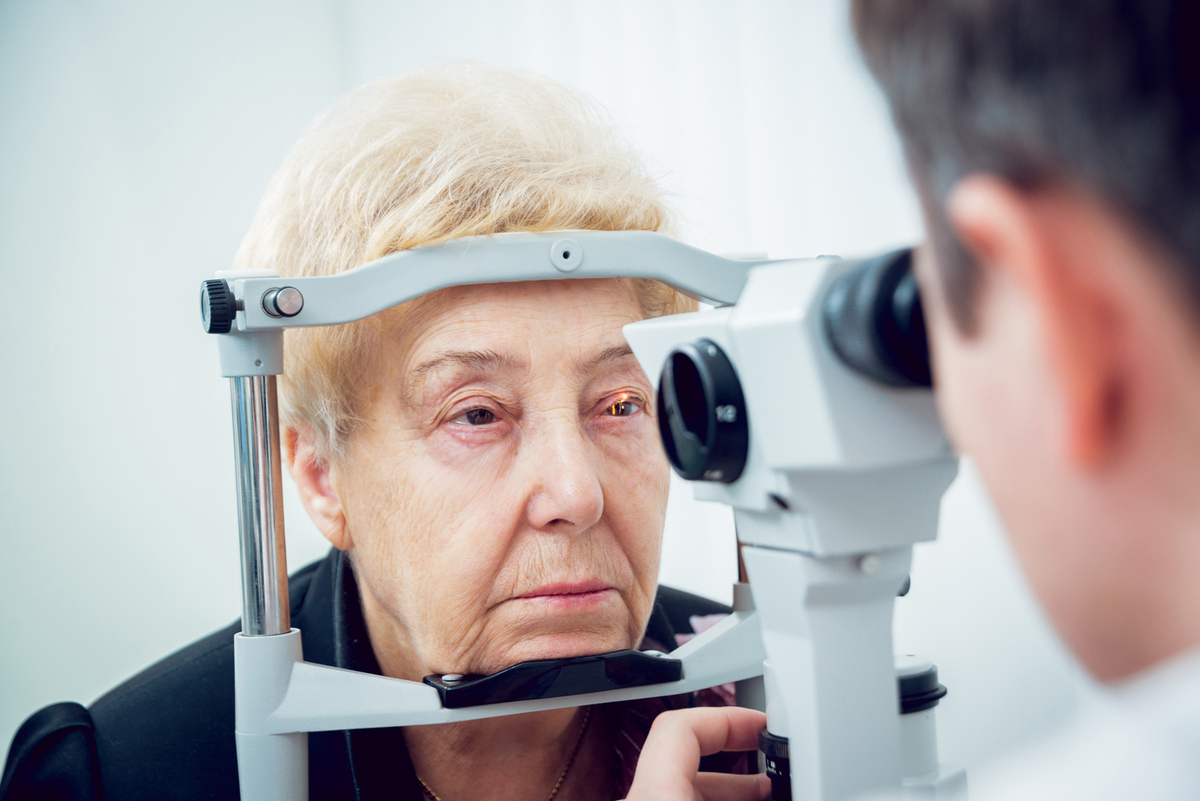William had been an avid hobby painter most of his adult life, and he wasn't deterred by his deteriorating vision — something he chalked up to age and thought was perfectly normal — when he was in his early eighties, either. His relatives had noticed that his once white painted clouds were starting to turn yellow (he could no longer tell the difference between white and yellow). William was stubborn, however, and wouldn't see a doctor. It wasn't until he had to get an eye test to renew his driving license that he was diagnosed with cataracts.

After the diagnosis, and after the surgery, it became "clear" that William's eyesight had gotten quite bad. He wasn't alone. By the time they reach 80, a shocking 70 percent of white Americans suffer from cataracts, along with 61 percent of Hispanic Americans and 53 percent of Black Americans.
What are cataracts?
Cataracts are opaque, cloudy, areas that obstruct the normally clear lenses covering our eyes. They come in several types, each affecting a part of the lens of the eyes, which is located behind the colored portion, the iris:
- A so-called nuclear cataract forms in the middle of the lens, and the lens visibly becomes clouded in the center
- A cortical cataract develops in the area surrounding the nucleus, or center, of the lens, looking more like a wedge
- Posterior capsular cataracts are a faster-developing type of cataract that develops in the outer layer
The majority of cataracts are a result of natural aging and seen in people over 55, caused by a breakdown of proteins in the lens. Due to illness or mechanical injury, however, even younger people — including children — sometimes have cataracts. Medications like corticosteroids, sun damage, and genetics can all increase a person's risk of developing cataracts. Women have a higher rate of developing cataracts than men.
What are the warning signs that you may have cataracts?
Because cataracts often form slowly over a long period of time, patients may not immediately notice them, and if they are older, can easily think that their vision changes are a normal result of aging. Gradually, cataracts can lead to these symptoms:
- A cloudy or blurry vision
- Double vision, wherein the sufferer sees two of an object when there is only one
- Brighter colors look like they are faded, or like they have a yellow tint
- Being more sensitive to light, whether from the sun or from bright artificial light sources, including distorted vision from brighter lights at night
- Increased difficulties with vision at night or in the dark
- Needing new glasses rather often
- Cataracts will cause a visual "layer over the lens" that is observable to outsiders, as well
What happens next if you suspect you have cataracts?
If you see a doctor, and ideally an ophthalmologist (eye doctor), you will receive a thorough but painless exam (including looking at the lens, retina, and eye pressure) and your doctor will ask you questions about your symptoms.
If cataracts are diagnosed, you and your doctor will next discuss treatment options. The recommended course of action will depend on the extent to which the cataracts are obstructing your vision and limiting your daily activities. In milder cases, you may only be recommended the use of brighter lights, anti-glare (sun)glasses to protect you during the day, and new glasses.
With more severe cataracts that make your daily life difficult, however, surgery is the treatment of choice. Cataract surgery is done to remove the clouded lens and replace it with a new, artificial lens that will greatly improve the patient's vision.
There are multiple approaches to cataract surgery, and you may be able to choose which option suits you better.
In phacoemulsification, a tiny cut in the cornea, the layer that covers the outside of the eye, is made to facilitate the extraction of the cloudy lens. An artificial intraocular lens is inserted to replace the clouded lens and restore your vision. Nowadays, more and more people also have the option to choose laser-assisted cataract surgery, which is faster and more precise but ultimately comes with the same recovery time. In some cases, an extracapsular cataract surgery that is able to remove the clouded lens in one go rather than bit by bit is also performed.
Can cataracts be prevented?
Not with absolute certainty — but younger people can take proactive steps to reduce their risk of developing cataracts later in life. Some of the steps, like protecting your eyes with sunglasses and making sure your diet is rich in nutrients that promote eye health, like vitamin C and E (see: Vitamin C may reduce your risk of cataracts), and zinc, seem obvious.
You may be surprised to hear that smoking increases your risk of developing cataracts while stopping smoking will reduce your risk, though. It is also important to receive regular dilated eye exams after you turn 60, so your eye doctor can spot cataracts early on and you can both take steps to manage them as soon as possible.
- Photo courtesy of SteadyHealth
- www.nei.nih.gov/learn-about-eye-health/eye-conditions-and-diseases/cataracts
- www.nei.nih.gov/learn-about-eye-health/resources-for-health-educators/eye-health-data-and-statistics/cataract-data-and-statistics
- www.aao.org/eye-health/diseases/what-are-cataracts
- www.aoa.org/healthy-eyes/eye-and-vision-conditions/cataract?sso=y


Your thoughts on this